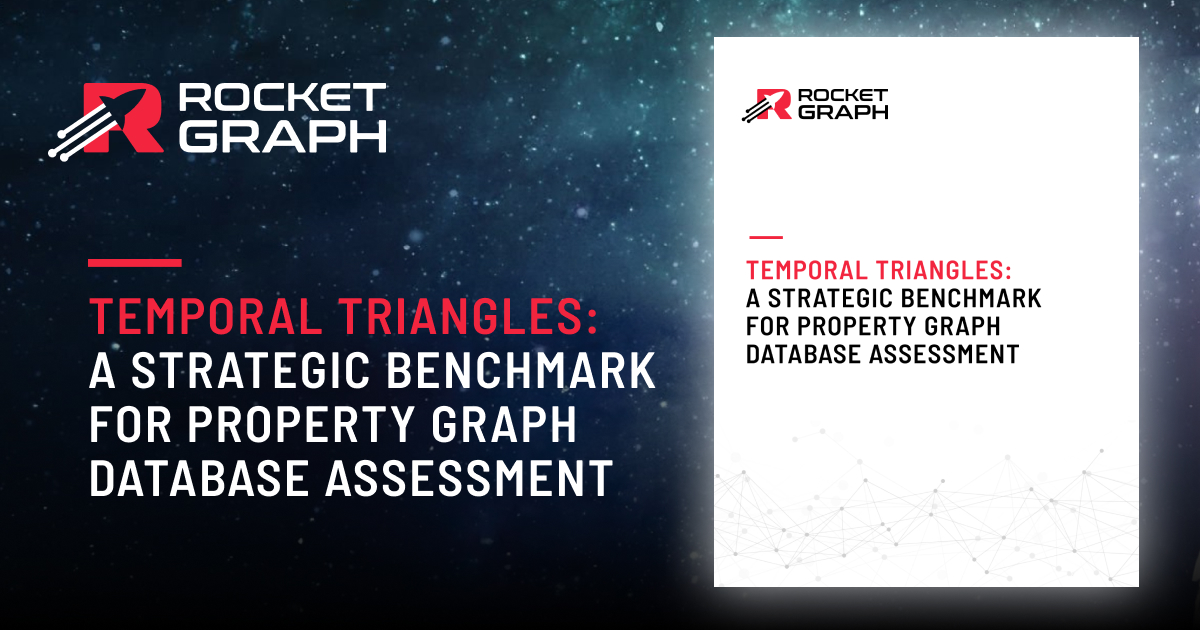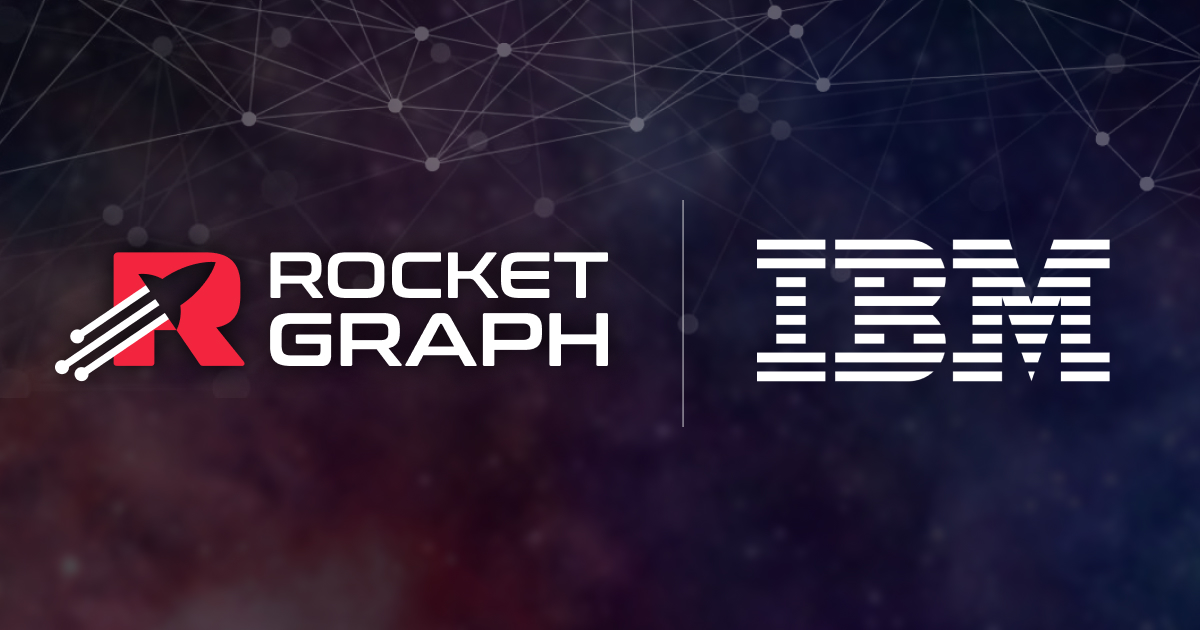GRAPH ANALYTICS PLATFORM BENCHMARKS
See how Rocketgraph’s speed and scale compares to the Neo4j™ graph database.
speed matters
We’re always testing our graph analytics platform to make sure we hold our lead in performance and scalability and can meet the most complex customer needs. Below are our most recent results from benchmarking vs. Neo4j.*
Benchmarking with breadth-first search
Breadth-first search (BFS) is the backbone of graph analytics. It’s an algorithm for searching a tree data structure or graph for a node that satisfies a given property. It starts at the tree root and explores all of the nodes at its depth before moving to the nodes at the next level of depth. For example, in a chess endgame, a chess engine might build the game tree for the current position by applying all possible moves and using BFS to find the fastest checkmate for either side.
Speedy graph traversal is key when searching for valuable information in your graph. With large-scale graphs, graph traversal speed makes or breaks your ability to get results in a practical amount of time. That’s why we use BFS for benchmarking.
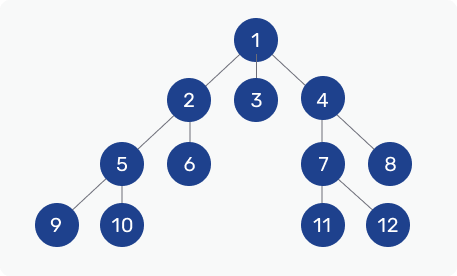
Neo4j GDS benchmarks using the BFS algorithm
GDS is Neo4j's solution for scaling analytics workloads. We ran benchmarks against one of the GDS algorithms, BFS. Below we show results from three different EC2 sizes on AWS: 64 virtual CPUs, 96 virtual CPUs, and 128 virtual CPUs. We ran at least three trials for each benchmark and are showing the average in our results.
The numbers shown represent the number of times faster Rocketgraph xGT ran this query than Neo4j, not the number of seconds.
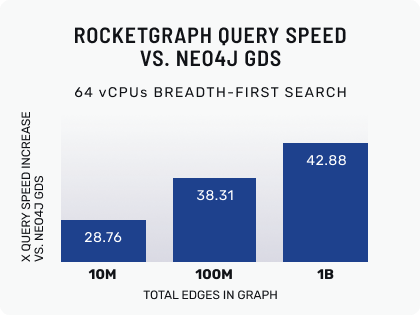
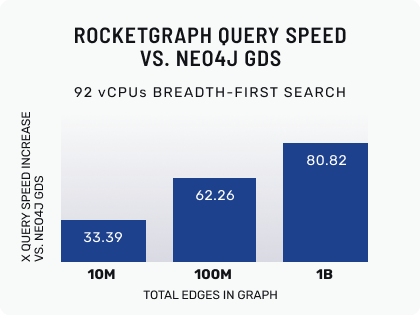

The bigger the graph, the bigger the performance gain
Our benchmarks showed that the difference in performance between Neo4j's GDS and Rocketgraph xGT grows with the size of the graph. While running a minor query with only 10 million edges, Neo4j might satisfy your needs. When working with a graph of a more serious scale, Neo4j falters, and Rocketgraph continues to scale linearly. In other words, with Neo4j, you can wait days for your query to return a solution. Can you afford to do that?
It’s also worth noting that when we ran Rocketgraph on a larger machine, our performance gain compared to Neo4j increased. This difference is due to Rocketgraph’s multithreaded, multicore parallelism.*
* Neo4j™, GDS™, and Cypher™ are registered trademarks of Neo4j, Inc.
Discover More
Temporal Triangles: a strategic benchmark.
Build a single property graph from existing data stores.
30 Day Free Trial, bring your own data or use ours.

